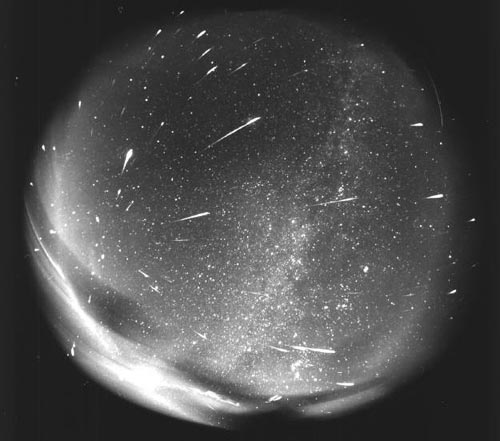Credit & Copyright: Juraj Toth
(Comenius U. Bratislava),
Modra Observatory
Explanation:
Is Leo leaking? Leo, the famous sky constellation visible on the left of the
above all-sky photograph,
appears to be the source of all the
meteors seen in this year's
Leonids Meteor Shower.
That
Leonids point back to
Leo is not a surprise - it is the reason this November
meteor shower
is called the Leonids.
Sand-sized debris expelled from
Comet Tempel-Tuttle
follows a well-defined orbit about our Sun,
and the part of the orbit that approaches
Earth
is superposed in front of the constellation Leo.
Therefore, when Earth crosses this orbit, the
radiant point of falling debris appears in Leo.
Over 150
meteors
can be seen in the
above four-hour exposure.
The
Geminid Meteor Shower, which appears to eminate from
the constellation of
Gemini, peaks this coming weekend.
1999 2000 2001 2002 2003 2004 2005 2006 2007 2008 2009 2010 2011 2012 2013 2014 2015 2016 2017 2018 2019 2020 2021 2022 2023 2024 2025 |
Январь Февраль Март Апрель Май Июнь Июль Август Сентябрь Октябрь Ноябрь Декабрь |
NASA Web Site Statements, Warnings, and Disclaimers
NASA Official: Jay Norris. Specific rights apply.
A service of: LHEA at NASA / GSFC
& Michigan Tech. U.
|
Публикации с ключевыми словами:
Leonids - constellation - meteor - Метеорный поток - Метеор - Леониды - Лев - Близнецы - Джеминиды
Публикации со словами: Leonids - constellation - meteor - Метеорный поток - Метеор - Леониды - Лев - Близнецы - Джеминиды | |
См. также:
Все публикации на ту же тему >> | |
